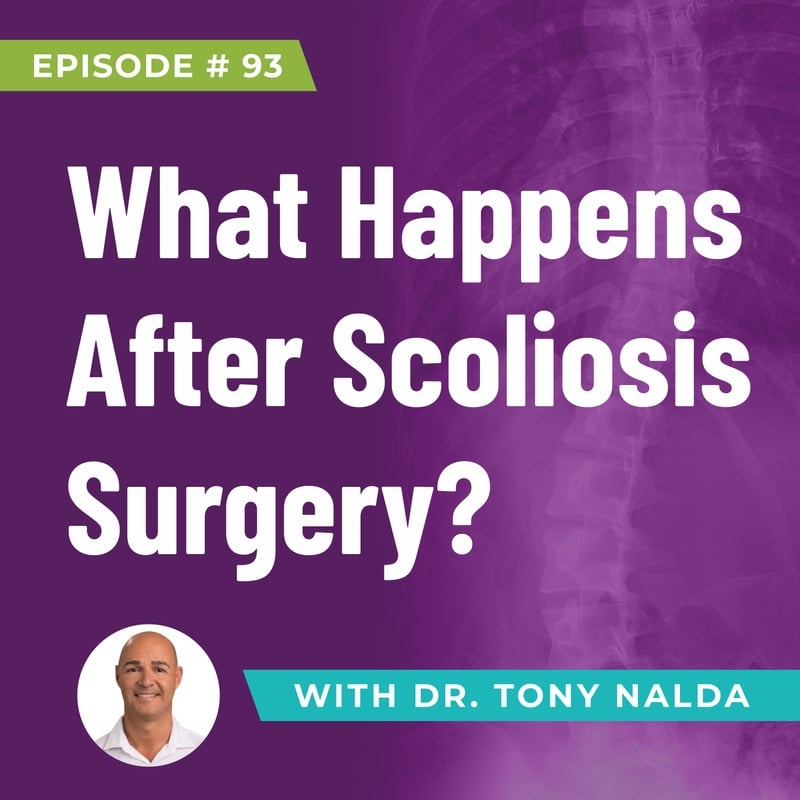Episode 93: What Happens After Scoliosis Surgery?
When it comes to treating scoliosis, surgery is one option. People choose surgery for different reasons. Some might not know about other treatments, while others believe surgery is a quick fix for how their spine looks. It's essential to know that surgery has risks, costs a lot, and can't be undone.
Understanding Scoliosis Surgery
Scoliosis surgery aims to stop the curve from getting worse and make the spine straighter. It involves putting rods and screws into the spine to hold it in place. While surgery has gotten better, there are still uncertainties about how well it works and what might happen in the long run.
Recovering from scoliosis surgery takes about two weeks in the hospital. Full recovery where the bones fuse can take up to a year. During the first year, you need to be careful with certain movements to allow your spine to heal. You'll also need rest and medications for pain at home.
While surgery can make the spine look straighter, it limits how much your spine can move. Imagine fusing your elbow joint — it won't move like it used to. There are uncertainties about how you'll feel and move after surgery, and you can't go back once it's done.
Long-Term Considerations
Choosing surgery means your spine won't move the same way again, and there's a risk of injury. If you're not happy with the results, it's hard to fix. Exploring other options that don't involve surgery is crucial for those who want to avoid these challenges.
If you're looking for a different path without surgery, the Scoliosis Reduction Center has a unique approach. The focus is on improving your spine's health and appearance without using rods and screws, offering results similar to surgery but without the irreversible effects.
In conclusion, deciding on scoliosis surgery is a big choice. Understanding what happens afterward helps you make an informed decision.
If you’re looking for alternatives, listen to Dr. Tony Nalda’s podcast.
Artlist.io 847544
Podcast: Play in new window | Download
Subscribe: RSS
Dr. Tony Nalda
DOCTOR OF CHIROPRACTIC
After receiving an undergraduate degree in psychology and his Doctorate of Chiropractic from Life University, Dr. Nalda settled in Celebration, Florida and proceeded to build one of Central Florida’s most successful chiropractic clinics.
His experience with patients suffering from scoliosis, and the confusion and frustration they faced, led him to seek a specialty in scoliosis care. In 2006 he completed his Intensive Care Certification from CLEAR Institute, a leading scoliosis educational and certification center.
About Dr. Tony Nalda
 Ready to explore scoliosis treatment? Contact Us Now
Ready to explore scoliosis treatment? Contact Us Now








